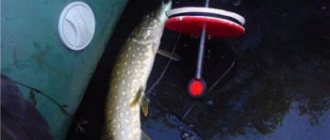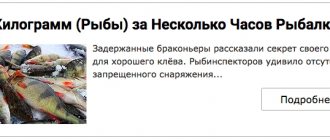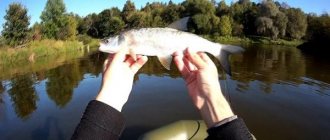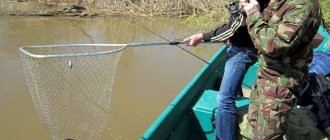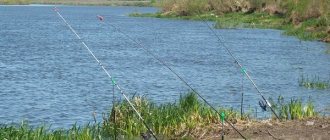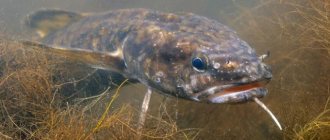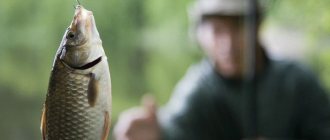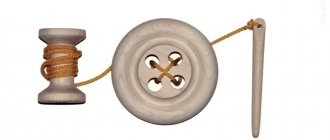Where is fishing prohibited?
You can find out in detail where fishing is prohibited from the relevant laws. For example, from the federal law “On Fisheries” FZ-No. 166. This is the main document regulating amateur fishing, however, it is not the only one. Specific rules and regulations for fishing are established at the regional level. Rosrybolovstvo regulates production in Russia.
- Important! Recreational fishing is free and free throughout Russia.
Places where fishing is allowed:
Fishing is allowed everywhere (during those periods) where it is not prohibited. That is, in public water bodies that are not nature reserves, private facilities, fish breeding enterprises or other places included in the above list. On commercial ponds, fishing is possible if the owners provide such a service for a fee according to the rules established by the farm.
Places where fishing is prohibited:
- near bridges, locks, dams and hydraulic structures;
- near hatchery fish and cages for raising young animals;
- on river fairways from a watercraft (boat, cutter);
- protected areas (protected areas, reserves, fish hatcheries);
- in pond fish farms;
- where fish spawn during spawning;
- at fish hatchery facilities during the release of young fish.
Before you go fishing, you need to find out whether it is possible to fish in this place. In spring, you also need to remember about fish reproduction - during this period the rules become stricter, up to a complete ban on fishing.
They are established by territorial authorities. You can find out about them on regional websites, in fishing societies, etc. The existing requirements can be reduced to several basic ones.
Main restrictions:
- prohibition of fishing in specific places and for certain periods;
- prohibition of mining of protected species;
- minimum size or weight preventing the prey of juveniles;
- face or boat fishing quotas;
- restrictions on the use of river or sea vessels in fishing (by size, type) or their complete ban;
- regulation of gear (by type, quantity, method of use);
- establishing fees (payment) for legally caught fish (aquatic life).
How to get a license
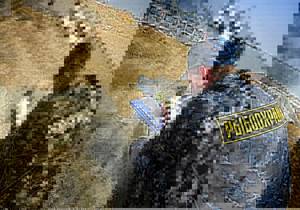
To be able to fish with nets, you must obtain a personal permit. Such a document is issued for a fee on a special form. Moreover, you need to pay for the license itself and for fishing a specific fish species.
- Typically, such permits are issued by departments of Rosrybolovstvo; they give a license for fishing in public places.
- You can also obtain the necessary paper from private offices that own water resources. They provide a fishing area on their water body.
- A personal permit has the strictest accountability. Such a document is issued to a specific citizen and cannot be transferred to third parties. This is even stated in the permit itself.
- Such documents are issued to amateur fishermen who fish for fun, and not to sell the caught biological resources. Fishing enterprises are issued another license, which involves catching biological resources on an industrial scale for the purpose of their further sale.
If you violate the ban on networks, you can receive an impressive fine or arrest for up to 6 months. But such measures are applied if the catch is particularly large or when fishing in prohibited areas. If you want to get only pleasure from fishing, and not serious financial losses, then it is better not to take risks and use only approved gear in places where this is permitted by law.
Video on the topic:
What is prohibited from fishing?
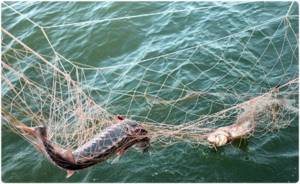
Mainly prohibited are methods and methods that cripple fish, lead to the catch of young fish, destroy all living things, or prevent aquatic inhabitants from restoring their numbers.
What is prohibited from fishing:
- networks;
- jamming with explosives;
- traps (muzzles, tops, etc.) excluding crayfish;
- installation of dams and other barriers;
- drainage of reservoirs;
- bait with light;
- to the closure;
- electroshock devices and electric fishing rods;
- guns and other firearms;
- scuba gear;
- bagasse traps and harvesters;
- winter fishing with the construction of huts and temporary structures on the ice;
- hunting for crayfish by diving and wading;
- hook traps;
- spears and other devices for impaling from the shore or boat;
- traps;
- bottom trawls;
- TVs and other network-based traps;
- catfishers.
What is allowed to fish:
- girders and mugs - no more than 10 hooks per 1 angler;
- crayfish - no more than 3 pieces per person (the diameter of the crayfish is no higher than 80 cm, and the mesh cells are more than 22 mm);
- trolling on motor or sailing vessels - 2 baits per vessel and no more;
- spans - up to 10 hooks per 1 catcher;
- from watercraft - if they are not officially registered, do not have registration marks, as well as in spawning areas when it is in progress;
- passive gear (slings, hooks, etc.) - on rivers where salmon fish live;
- pneumatic weapons - except those specially designed for spearfishing;
- spinning rods and fishing rods - up to 10 hooks for all for 1 person;
- spinning rods and fishing rods - up to 5 pieces per 1 angler;
- lifts, scoops - with a size of more than 1 meter in width and length and a mesh cell no finer than 10 mm.
Is it possible to catch sterlet?
Sterlet is listed in the Red Book of the Russian Federation, therefore the procedure for its production is strictly regulated by the legislative documents of each specific region of the country, and is controlled by the Russian fisheries supervision authorities.
Catching this fish can only be carried out on the basis of a specially issued license. If we talk about the regions of Siberia, here fishing for sterlet is allowed in almost all its habitats. This is due to many factors, including folk crafts. The indigenous inhabitants of Siberia have been fishing for it for many years in a row, and do not see anything wrong with it. According to experts, there are quite a lot of sterlet in these places, the fish population is increasing, which is confirmed by special registration data from the region. The problem lies elsewhere, the size of the fish is most often small, and catching such prey is strictly prohibited by law. The issued license for one-time fishing gives permission to catch 10 fish, with a length of at least 31 cm, and a weight of 250 grams. A one-time document allows you to fish for no more than two days from 6 a.m. to 11 p.m. Fishing at night is prohibited. The license lines assume the correct start of the sterlet catch, which defines the possible start of the fishing season between mid-July and September 1st.
What kind of fish should be released after being caught?

The law prohibits the harvesting of juveniles. It is worth noting that the length of the fish is measured from the highest point of the snout (approx. with the mouth closed) and to the base of the middle rays of the caudal fin. For crustaceans, this value will be equal to the length of the body from the end of the tail plates to the line that connects the middle of the eyes. If the length of the caught fish is less than acceptable, it must be released “home” with a minimum of damage.
Minimum dimensions by type (in centimeters):
- silver carp – 50;
- grass carp – 45;
- som – 40;
- burbot – 40;
- pike perch – 38;
- asp – 35;
- pike – 32;
- carp – 30;
- bersh – 25;
- carp – 24;
- fisherman – 22;
- chub – 20;
- barbel – 20;
- bream – 17-28 (values vary by region);
- ram – 16;
- trout – 15;
- subdust – 15;
- herring – 15;
- cancer – 9.
Fishing restrictions
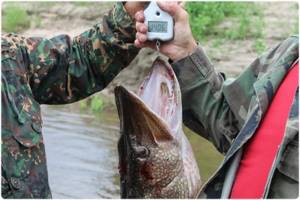
In terms of the amount of catch, the law determines the following:
- The catch rate per person/day is 5 kg of fish. In this case, there is only one exception - in the case when the weight of the first fish is higher than the catch norm.
- The norm for exporting fish is no more than double the norm for 2 days of stay (export in any form - salted or dried, smoked and raw).
- There are no restrictions on the catch of bleak, minnows and ruffs.
- The catch rate for crayfish is no more than 30 pieces per person/day.
- Bait fishing - no more than 30 live bait per person/day.
- It is strictly forbidden to engage in industrial fishing under the guise of amateur fishing. The offender may be charged under Article 256 of the Criminal Code of the Russian Federation.
Fines and punishments for illegal fishing in 2021

For illegal fishing in 2021, the following fines and penalties are provided:
Administrative liability of citizens in the form of a fine (Administrative Code of the Russian Federation):
- For violating fishing rules. Fine: – 2000-5000 rubles. and confiscation of gear and watercraft (Article 8.37 Part 2).
- For fishing without a license when one is required, or for violating a license. Fine: – 500-1000 rubles. (Article 7.11).
- For the destruction of rare fish species (from the Red Book). Fine: – 1000-2000 rubles. with the seizure of catch and gear (Article 8.35).
- For failure to comply with the rules for relocation, acclimatization or hybridization of fish. Fine: – 1000-1500 rubles. (v.8.36).
- For ignoring the rules for protecting habitats or fish migration routes. Fine: – 2000-5000 rubles. (v. 8.33).
- For violating the rules of water use while fishing. Fine: – 1500-2000 rubles. (Article 8.14 part 2).
- For violation of navigation rules for ships. Fine: – 500-1000 rubles, or deprivation of rights for up to one year (Article 11.7 Part 2).
- For catching fish during the spawning season. Fine: up to 300,000 rubles.
- When using prohibited fishing gear causing large-scale damage in places (and during) spawning. Fine: 100,000 - 300,000 rubles or arrest for 6 months.
- For parking a car near a reservoir (the distance from the water's edge to the car must be at least 200 meters). Fine: - 3,500-4,000 rubles.
- You cannot litter the banks of a reservoir or throw garbage into it. Such actions are fined under Art. 8.13 part 1 for 500-1000 rubles.
- Destruction or damage of special signs defining the boundaries of protected objects. Fine: - 300-500 rubles.
Fines for fish during temporary bans (during spawning).
Criminal liability:
- For prohibited harvesting of aquatic life in large quantities , during the spawning period or during the migration of fish to spawn, from a vessel with a motor, in nature reserves and sanctuaries - a fine of 300-500 thousand rubles, or correctional labor or a prison term of up to 2 years (Article 256 p. .1 of the Criminal Code of the Russian Federation).
- For illegal harvesting of species protected by the Red Book or international agreements - from compulsory labor to 480 hours, up to 3 years in prison with a penalty of up to 1 million rubles (Article 258.1 Part 1 of the Criminal Code of the Russian Federation).
Addition on responsibility for fishing for Red Data Book species. If such an individual was caught by accident, as a result of which she died, then she will have to answer administratively. But if the catch was intentional, or the caught fish was taken home and you were caught, expect criminal charges.
Methods of catching sterlet
Current methods of catching sterlet in open water. We do not consider seine tackle, because it is classified as poaching gear.
Rosrybolovstvo is considering lifting the ban on sterlet fishing in the Volga-Caspian basin and, accordingly, stopping the imposition of fines.
It is still prohibited to catch sterlet:
- In certain areas (reserves, fish farms, fish hatcheries).
- During spawning.
- Fishing with a net.
- Airplane fishing.
- On the move.
The fine for 1 caught sterlet is 4,572 rubles. Images are attached below.

Click to enlarge
Basic donka
When catching sterlet on bottom gear , be sure to consider the following details; If you are a beginner and do not know the features of a particular area, then you should not use two leashes when rigging. Hook only one, otherwise, if the bottom is covered in snags, you will get caught when fishing for fish, the leash will break, and the sterlet will come off, which is very bad. Usually the sterlet manifests itself very quickly; if there is a school at the casting point, then 15 minutes is enough for the fish to start biting. If much more time has passed, then hurry to change place.
For strength, do not forget to wrap the cord with braid a meter from the leash - this will give strength to the bottom tackle, and when the cord is pulled, it will not cut it.
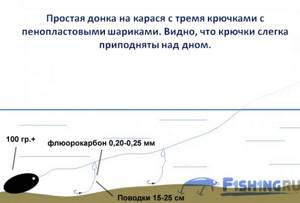
Anglers who fish in a well-known area can safely attach two leashes , but it’s definitely not worth it anymore - sterlet is a bottom-dwelling fish, there’s no point. The size of leashes needed is from 15 to 25 cm long and 0.20-0.25 mm thick . Choose the highest quality fishing line for leashes to avoid breakage, and also, cheap fishing line is prone to twisting, which will interfere with normal fishing. The optimal fishing line length is 150-200 meters. The feeder also performed well for carp fishing.
Ryobi Ecusima with size 3000 is suitable for catching small sterlet weighing up to 1.5 kg
When choosing a reel, pay attention to its free movement - this will make it easier to fish for sterlet. The fish do not particularly resist, especially the females after spawning, which makes fishing in the summer easy and enjoyable, because the bite at this time is observed around the clock. The reel size should be 3000-4000 for medium-sized sterlet.
It is recommended to catch sterlet with 2-3 donks at once. On a long pit they need to be placed in the middle, at the entrance and at the exit. Use a landing net when fishing for sterlet; if you ignore it, you will injure all your hands from the fish’s spines.
If your goal is to catch a lot of fish, it is better to use a feeder. Fill it with a tasty mixture purchased at a fishing store or prepare it yourself at home. To do this, boil the millet, let it dry thoroughly, add a few drops of anise for a sharp smell, cool, cut into pieces and catch the sterlet. It is good to fill the feeder with boiled corn.
fishing rod that is convenient for you, the main thing is that it is durable. The length is enough up to 2.5 m if you fish from a boat. When fishing from the shore, it will be more convenient to fish with a 4-6 meter rod. The position after casting will be correct in case of strong currents if you position the feeder vertically; In still water, keep it parallel to the shore.

The sinker must be heavy, at least 100 g , and sink instantly and hold the tackle in the current.
During a flood, sterlet usually stands in quiet backwaters and likes to feed near the border of fast currents and quiet water. This applies to the summer period. With the arrival of autumn, the sterlet begins to hide in deep-sea holes, moving away from the shores, so it prepares for wintering.
As a rule, during the day the sterlet likes to swim along the fairway, so when casting, take into account that the load flies about 20 meters.
Video on making bottom gear (tackle):
Tackle elastic band
Catching sterlet with an elastic band is very convenient if you plan to fish in one place for more than one day, and also if the bottom is smooth and clean. This method is simpler than fishing with a donk, because you don’t have to constantly get the gear out. You are allowed to attach no more than 5 hooks to an elastic band, but this is quite enough; you can pull out several sterlets at once.
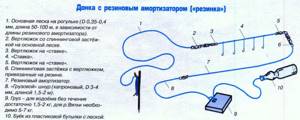
The first version of the donkey with an elastic band
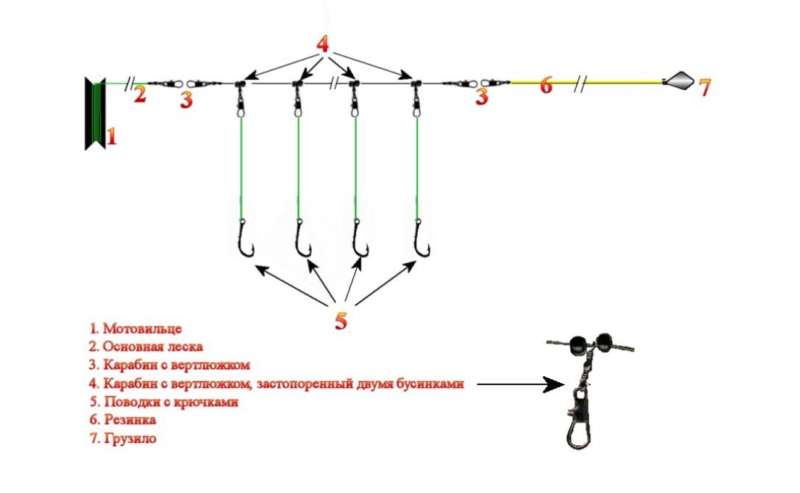
Second option with 4 leashes
For a five-meter fishing line you need 1 meter of elastic - this is how we calculate the tension coefficient. Take leashes for elastic bands from fluorocarbon measuring 0.2-0.23 and 15-25 cm . The load will show itself better in a wide shape, for example, in the form of a spoon or any geometric figure; it should lie flat on the bottom and not be carried away by the current. Weighing no more than 200 grams . and 15 cm . in diameter.
A complete article on making your own elastic bands.
How to choose hooks
Hooks from the Japanese company owner - wear slowly, but are expensive.
When fishing with a donk, use a hook with a long shank No. 6, such a hook is more convenient to remove from a long mouth and you can place a large bait on the tip. If you prefer to fish with an elastic band, stock up on enough hooks, they get dull very quickly on the rocky bottom; or better yet, take a special sharpener for sharpening the hook - this will protect you from unwanted fish falling off the hook.
Hooks must be of high quality (take trusted companies, don’t skimp), it’s good if they unbend when hooked. If you take cheap ones, you will end up not doing sterlet fishing, but endlessly replacing gear. Opt for hooks without a beard, then you will be able to painlessly release the sturgeon back into the river if it turns out to be small.
Spearfishing
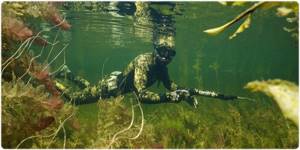
Spearfishing is defined as a type of fishing and is permitted only with the help of an underwater gun or harpoon.
The harpoon should not have more than 5 teeth on the tip. The use of these types of implements is strictly prohibited for land hunting and fishing. It is prohibited to use scuba gear for spearfishing. You should also not fish this way in crowded areas.
At the same time, for this type of fishing, all prohibitions and restrictions of the federal laws “On Fisheries” Federal Law No. 166 and Federal Law No. 475, as well as general fishing rules and regional limits, apply.
Where is the best place to fish?
Determining where to fish is one of the first and fundamental steps to a rich catch, but finding it is not very easy. Fishermen who regularly catch sterlet quickly occupy a good place.
From season to season, they go to the same places closer to the base part of the river, or are located in the narrowest channels where there is a current. Of course, there is no specific description of the place where a huge catch could be.
Depending on many climatic factors, fish can be caught in different places in the reservoir. Therefore, it is necessary to rely on the advice of experienced fishermen.
Fishing from a boat (boat)
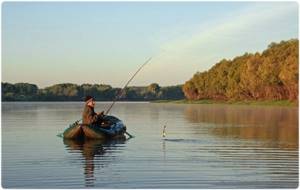
Fishing from a boat is prohibited during spawning season. Other bans are also possible at the regional level. The danger here is that it is possible not only to accrue a large fine, but also to confiscate the watercraft itself.
Therefore, before you go fishing with a boat (boat), you always need to find out in advance all the rules that are in force in the region at the moment. This is important because they are constantly changing and being supplemented. The relevant documents and permission for this fishing method must be with you.
conclusions
From all of the above, the following points can be highlighted:
- Ignorance of the law is not an excuse.
- Anglers must educate themselves about fishing rules.
- You can fish anywhere and at any time, where it is not prohibited, excluding the period of fish spawning.
- You can use fishing rods and spinning rods. No more than 5 pieces per fisherman.
- The catch size limit is set locally.
- The catch rate is 5 kg per person per day.
- Fishing with nets is possible in some areas and only with a license.
- Underwater fishing is permitted without the use of scuba gear.
